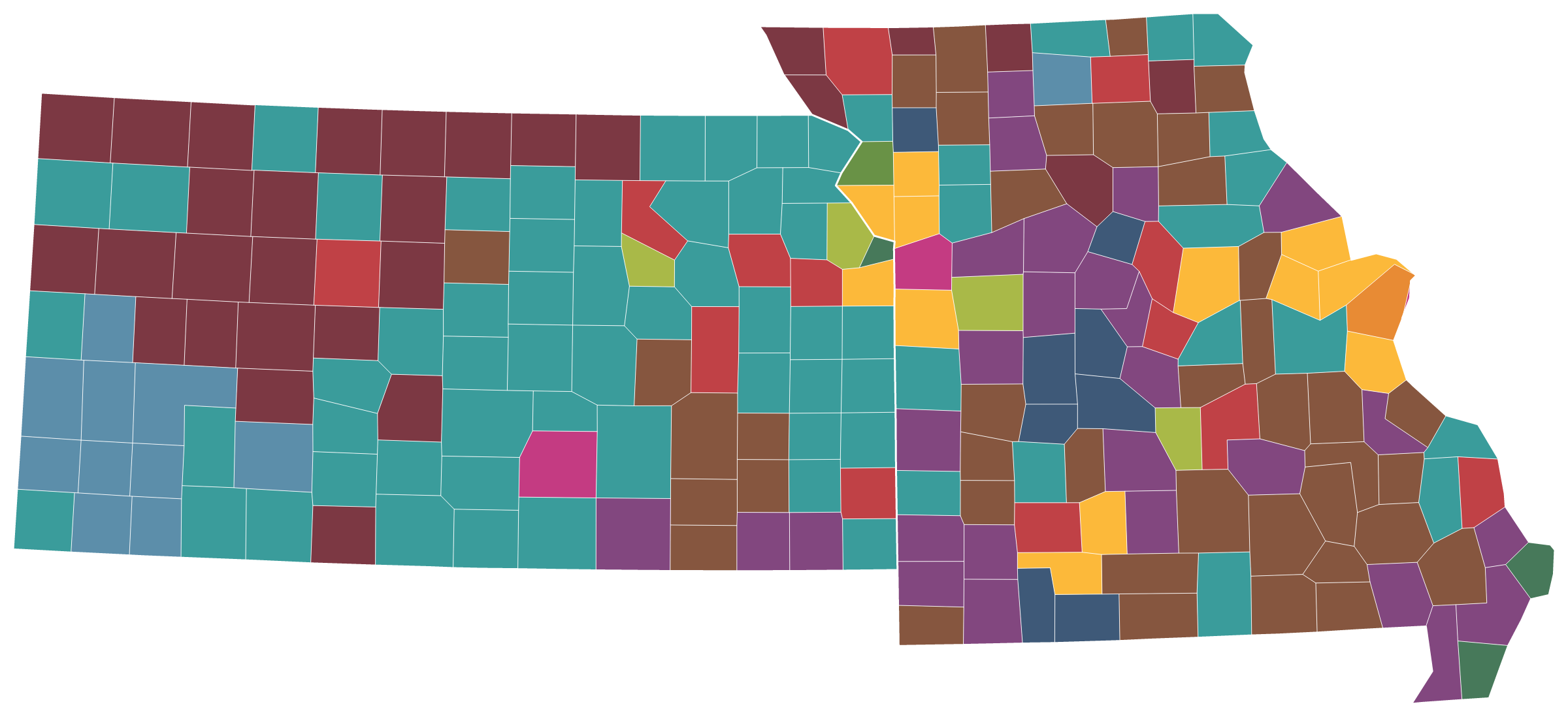How the Political Landscapes of Neighboring Kansas and Missouri Differ
Last week, voters in Kansas voted overwhelmingly to keep the right to an abortion in the state’s constitution. The vote and its decisiveness — a nearly 19-point margin — surprised political watchers across the country.
One big theme that emerged in the coverage was the Kansas factor. Many analyses featured lines like: “If this can happen in conservative Kansas, it could happen anywhere.” And there is a lot of truth to that sentiment. Kansas hasn’t voted for a Democratic presidential nominee since 1964.
But the most consistent point of the American Communities Project is that the United States is a very complicated landscape and even places that sit near each other can be very different. That’s not just true at the county level (the ACP’s primary unit of analysis), it’s also true among states.
The Divergent County Types of Kansas and Missouri
Consider Kansas and its neighbor, Missouri. The two share a long history of antagonism going back to border fights in the Civil War era, but also a long border and a rightward political lean. By the numbers they don’t seem dramatically different. Missouri is more densely populated and Kansas is a little more racially and ethnically diverse, but both voted for Republican Donald Trump in 2020 by about 15 percentage points.
And yet, when you look at them through the frame of the American Communities Project, they look quite different.
Look at those maps and you’ll notice some sharp differences.
There is a lot more brown and purple on the Missouri map. Those colors represent Working Class Country and Evangelical Hubs in the ACP, two of the more socially conservative rural community types. Meanwhile, on the Kansas map, you’ll notice a lot more teal and light blue. Those colors represent Rural Middle America and Hispanic Centers in the ACP. Those places are conservative, but more nuanced politically. (You’ll also see the maroon of the Aging Farmlands.)
When you look at the population breakdowns of the states in the ACP, the differences are pronounced.
A quarter of the population in Kansas live in Rural Middle America counties. Those counties might best be thought of as small-town America. They often contain small population centers that serve as hubs for a larger rural surrounding area. Saline County is a good example. With a population of 53,000, it’s not urban by any stretch, but Salina, the city in its center, holds 46,000 people.
Other more culturally conservative community types, such as the Evangelical Hubs and Working Class Country counties, hold less than 4% of the state’s population.
In Missouri, those numbers are flipped. Almost 20% of the state’s population live in Evangelical Hubs or Working Class Country counties, while about 6% live in Rural Middle America.
It’s hard to know what kind of difference that would make on abortion measures without a post-Roe vote in Missouri.
The presidential vote data suggests it could matter because the vote in those communities tends to lean more strongly Republican. In 2020, Donald Trump won Rural Middle America by 28 percentage points, 63% to 35%. But Trump won Working Class Country by 47 points, 73% to 26%. And he won Evangelical Hubs by 51 points, 75% to 24%.
On August 2, however, the Kansas abortion vote in all those county types was fairly close, with voters choosing to remove the state’s right to an abortion, narrowly. If that trend were to continue in other states, it would certainly suggest that women’s reproductive rights are popular across the board, and abortion bans (or even strict measure to curtail abortion) are likely to fail in any state with a decent-sized urban population.
There are plenty of tests on the ballot this fall, including in Michigan, where there is likely to be an initiative to make reproductive rights part of the state constitution and where the ACP is reporting on the governor’s race. Other states with abortion-related measures (affirming a right or adding restrictions) include California, Kentucky, Montana, and Vermont.
By the end of the year, the ACP will have a much better sense of the larger issue environment on abortion across most of its 15 community types.
